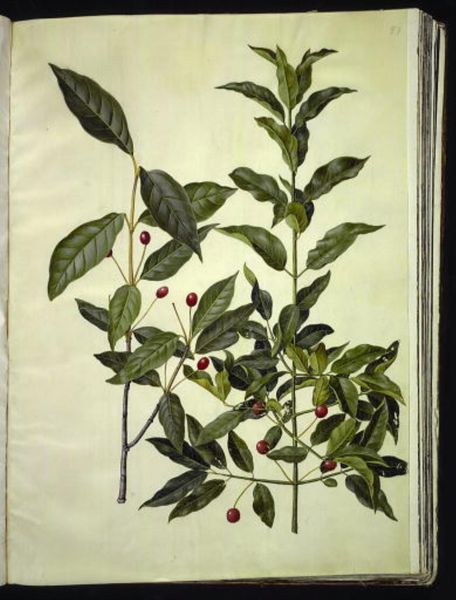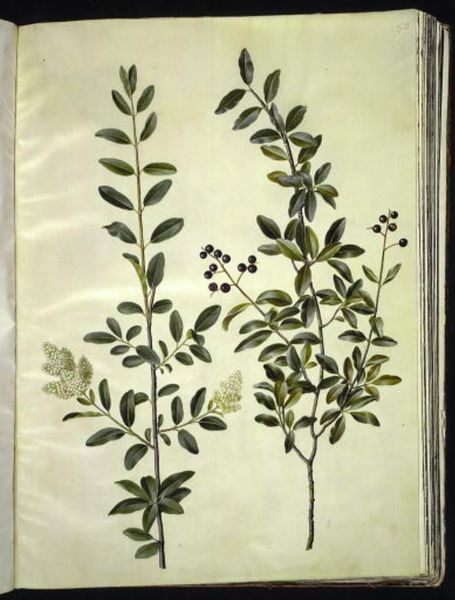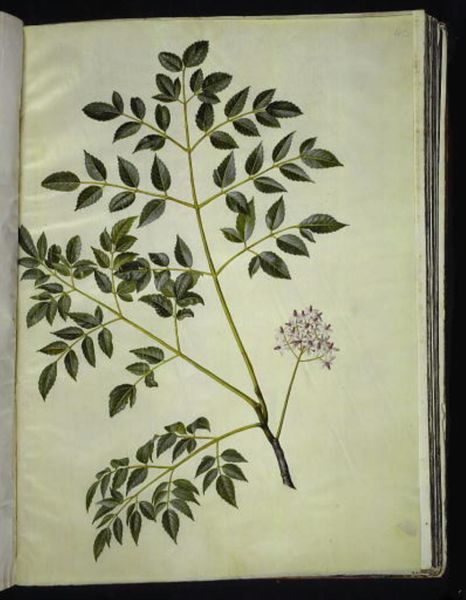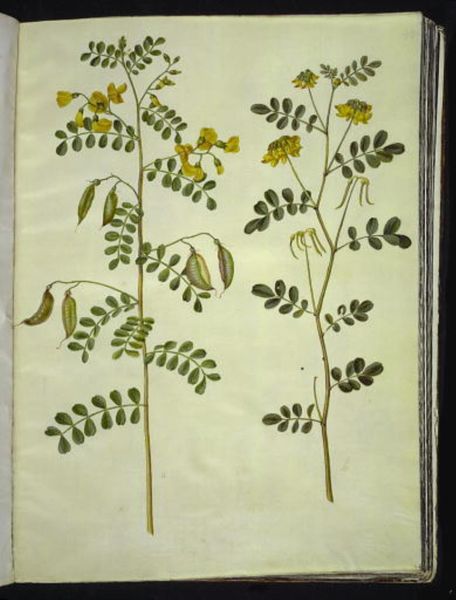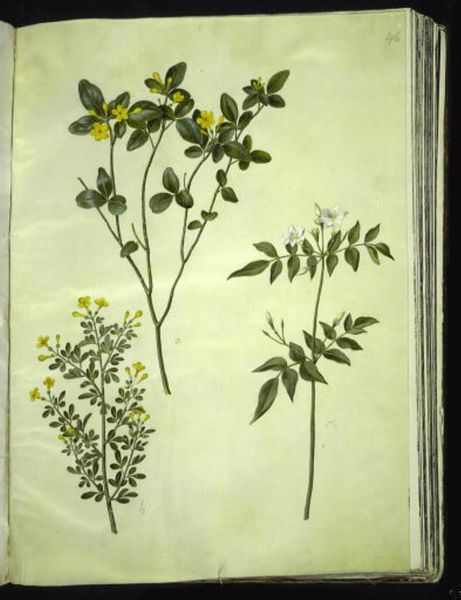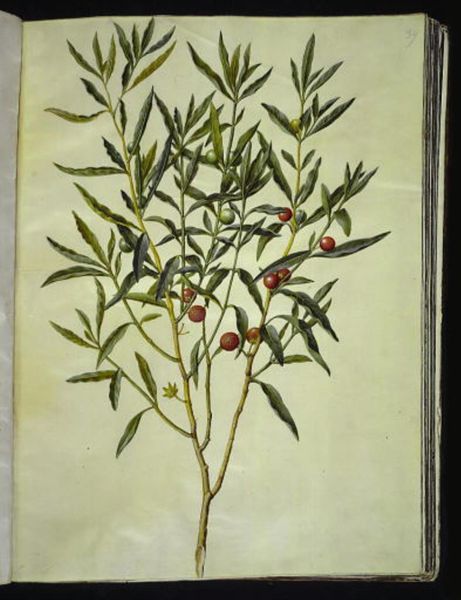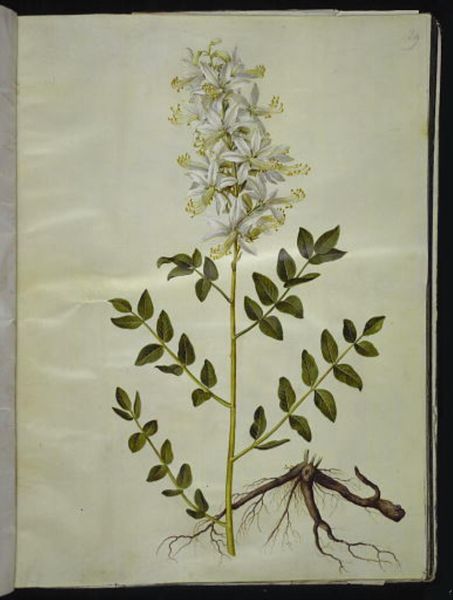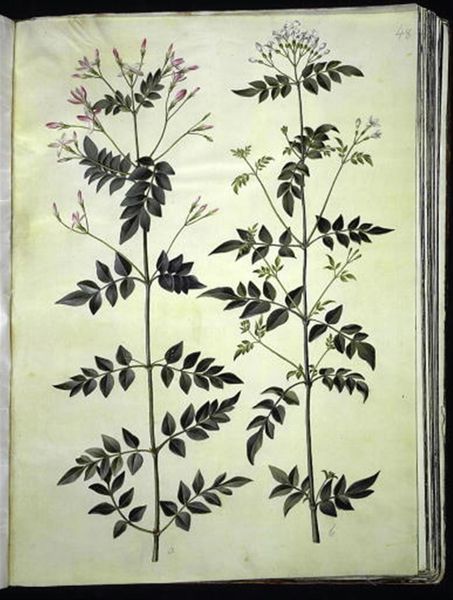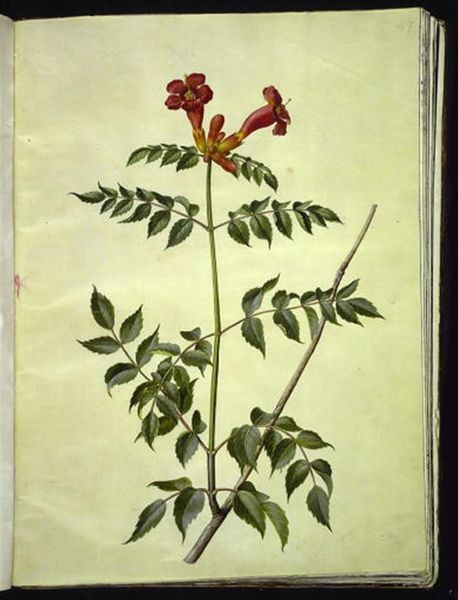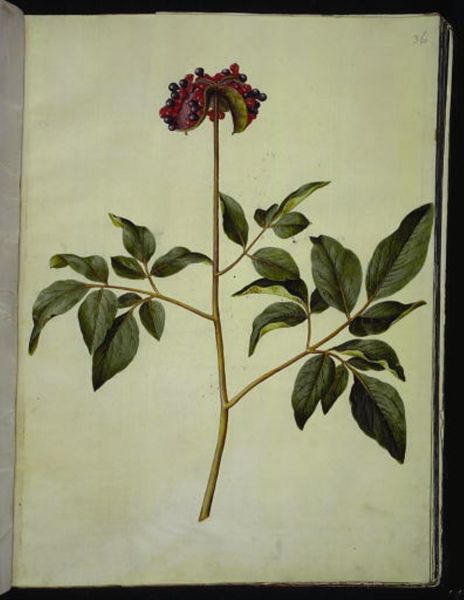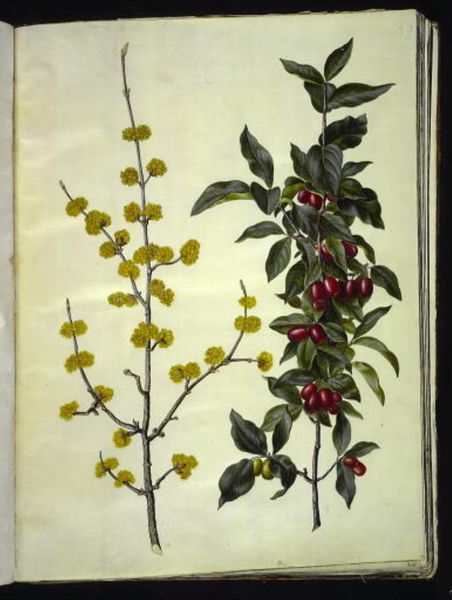
drawing, gouache, watercolor
#
drawing
#
gouache
#
watercolor
#
botanical art
#
watercolor
Dimensions: 505 mm (height) x 385 mm (width) (bladmaal)
Editor: Here we have Hans Simon Holtzbecker's "Castanea sativa," or "true chestnut," a botanical illustration created between 1649 and 1659 using watercolor and gouache. The detail is remarkable! What jumps out at you when you look at this, especially in its historical context? Curator: What strikes me immediately is its scientific and societal function. Consider that botanical illustration during this period wasn't purely artistic; it served emerging fields like botany and medicine. These detailed drawings, painstakingly created, were crucial for disseminating knowledge about plants and their potential uses. So how might an image like this have circulated? Editor: Maybe in books? For apothecaries or wealthy landowners interested in cultivating exotic plants? Curator: Precisely! And think about the socio-political implications. Exploration and colonization brought new plant species to Europe. Images like this played a role in cataloging and, in a sense, claiming that natural world. These drawings, beautiful as they are, are also documents of an era defined by expansion and the scientific gaze. What do you make of the artistic choices? Editor: Well, the artist is definitely prioritizing accuracy and clarity. The flat background throws the branches into sharp relief. There’s an almost photographic quality to it, despite being made centuries before photography existed! Curator: It prompts the question, doesn’t it? How did Holtzbecker develop this style, and was he trained in science or art first? Consider who might have commissioned such detailed work and why they felt the need for it to be represented in this particular way. What do we know about Holtzbecker and the audience for such work at that time? Editor: So much to unpack. I initially just saw a pretty drawing, but now I realize it reflects a whole world of scientific advancement, global exploration, and even the early seeds of empire! Curator: Indeed. By analyzing the social context of botanical art, we understand how aesthetics intertwined with power, science, and the ambition to categorize the world around us.
Comments
No comments
Be the first to comment and join the conversation on the ultimate creative platform.
